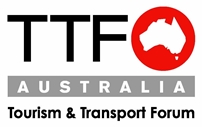TTF Media Release
Sunday 12 July 2020
STRATEGIC FEDERAL GOVERNMENT INVESTMENT IN NATIONAL PARKS IS CRITICAL TO DOMESTIC TOURISM REBOOT
The tourism industry has welcomed today’s Federal Government investment in Australia’s Commonwealth National Parks which will help support regional tourism dispersal and reboot the regional visitor economy.
Tourism & Transport Forum (TTF) Chief Executive Margy Osmond said the $233 million in funding would also significantly boost morale for tourism businesses in regional areas suffering from the double whammy of the summer bushfire crisis and the more recent COVID19 pandemic.
“This significant and strategic investment in national parks across a range of destinations is just the sort of support that regional destinations desperately need in order to prepare for the return of domestic visitors in greater numbers as they prepare to holiday here this year,” TTF Chief Executive Margy Osmond said.
“New infrastructure and upgrades to cultural centres, walking tracks, roads, campgrounds and viewing platforms including in Uluru-Kata Tjuta National Park and Kakadu National Park in the NT, Booderee on the NSW South Coast and the Australian National Botanic Gardens in Canberra will all meet new visitor demand.
“With this funding, the Australian Government is backing our regional tourism destinations and delivering the strong message that where Australians are able to, they should head out and explore their own backyard.”
The joint announcement from Environment Minister Sussan Ley, Tourism Minister Simon Birmingham and Regional Development Assistant Minister Nola Marino comes as regional communities are ready to put out the welcome mat according to recent research commissioned by the Tourism and Transport Forum.
The survey of the travel intentions of 1,500 Australians conducted by Newgate Research showed strong support among regional communities for an increase in domestic visitors with 70 per cent of respondents saying it would have positive impacts.
“Apart from the positive sentiment about visitors returning and injecting much needed money into struggling regional communities it is also pleasing to see that almost one in four respondents to our survey expressed interest in travelling to bushfire affected areas,” Margy Osmond continued.
“In NSW for example, while Sydney was the most popular destination with people planning trips at 30 per cent, it was closely followed by regional destinations, the South Coast (27 per cent), Central Coast (26 per cent), Hunter/Mid North Coast (25 per cent) and Regional NSW (21 per cent).
“And unsurprisingly nature-based activities was one of the most popular responses from those surveyed when asked why they would travel, comprising almost a third of responses, which highlights the importance of this new investment in national parks.”
“The tourism industry continues to hurt, and this support goes some way to supporting domestic tourism to fill part of the $4 billion black hole left by the lack of international inbound travel for the foreseeable future.”
Ends.
Media Contact: TTF Manager Policy & Government Relations Lindsay Hermes I lhermes@ttf.org.au I 0418 948 447
